English Garden Plants
Showing 241–252 of 273 results
-
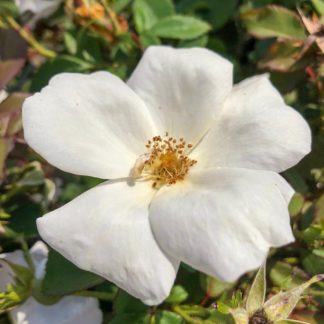
Rose White Knock Out®
$67.99 -
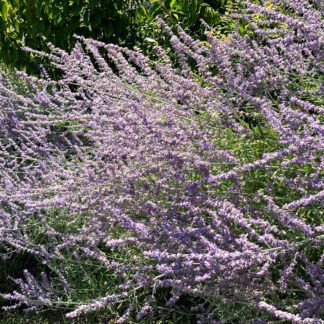
Russian Sage
$24.99 -

Russian Sage Blue Jean Baby
$27.99 -
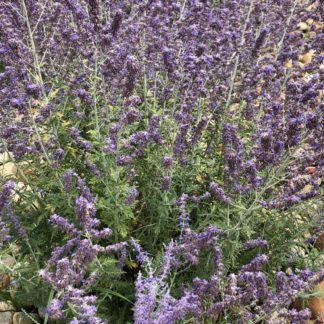
Russian Sage Little Spire
$24.99 -
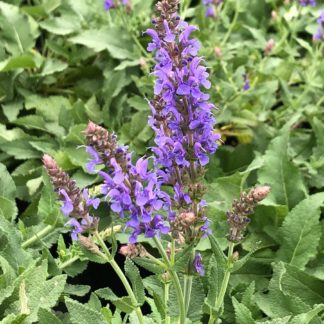
Salvia Blue Hill
$26.99 -
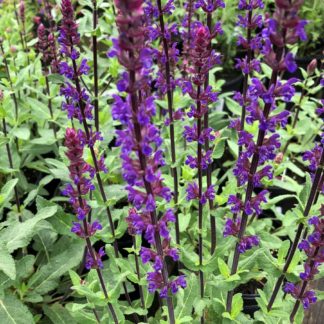
Salvia Caradonna
$25.99 -
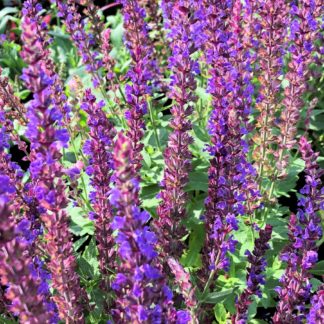
Salvia East Friesland
$25.99 -

Salvia Marcus
$24.99 -
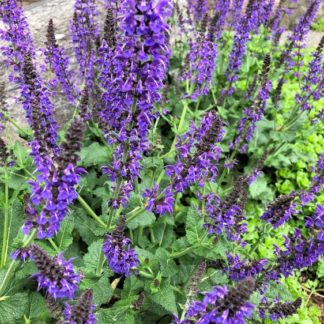
Salvia May Night
$24.99 -
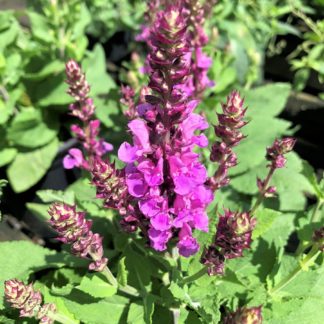
Salvia Rose Marvel
$26.99 -
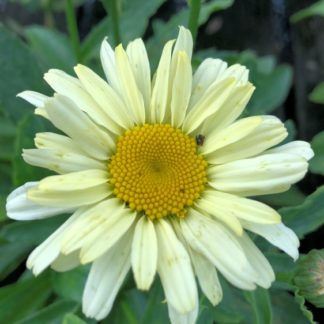
Shasta Daisy Banana Cream
$31.99 -
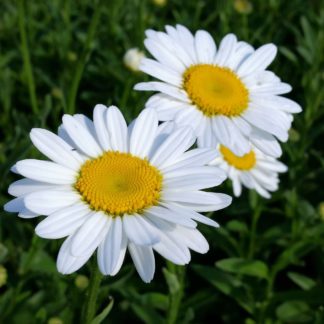
Shasta Daisy Becky
$24.99
Showing 241–252 of 273 results
More About English Garden Plants
The cottage garden developed out of necessity in England in the 1400s. Villagers couldn’t afford to waste any valuable planting space on their small plots of land. The early cottage gardens included a lot of edibles for both people and livestock to live on. Herbs were planted for cooking and medicine. Flowers were included to encourage bees and other pollinators to increase the yield of the edible plants.
Today, while our American version of an English Cottage garden includes some edibles and herbs, the emphasis has shifted to flowers. Our gardens also tend to have just a touch of cottage whimsy, such as a stone garden wall, a white picket fence, an arbor or trellis. It may also include a bird bath, bee skep or bird house. It is this style which we define as English Cottage gardens: Romantic collections of colorful, assorted perennials and flowering shrubs planted liberally in an informal layout.
A few of the essential elements we notice in English Cottage garden designs are compiled here:
- Informal and Romantic Design
- Dense plantings with lots of variety
- Four-season appeal
- Traditional and Recycled Materials
- Naturalization of plants is encouraged

Informal and Romantic Design
English Cottage garden design might be considered almost the total opposite of a Modern Garden design. Whereas Modern Gardens embrace straight lines and relatively simplistic plant pallets, English Cottage garden designs encourage informal, casual borders that are bursting with an abundance of colors and a wide palette of plants. Perennials are used in abundance.
In general, the four elements of design are line, form, color, and texture. Add the prefix loose- or mixed- to these elements and it seems to perfectly describe the vibe of English Cottage gardens: ‘loose-lines’, ‘loose-forms’, ‘mixed-colors’, and ‘mixed-textures’!
The English Cottage gardens are considered romantic. Charming and graceful. Traditional.
When you form your beds, let yourself feel the essence of the garden and let the garden flow freely. It may even develop itself over time.
The rundown:
- Embrace free flowing borders
- Use an abundance of plants for variety of color and shapes
- Should create a feeling of relaxation

Dense Plantings with Lots of Variety
If you love experimenting with plants, the cottage garden is for you! English Cottage garden designs include a large selection of colorful perennials. There are so many types of perennials to choose from, this is where we get to have fun mixing and matching them all! We are looking for a colorful collage of flowers. Combine flowers of all different colors, heights, and sizes to create graceful combinations, full of charm. While there are no set rules about the use of color, cottage gardens typically highlight softer hues of pink, blue, lavender and white with perhaps just a touch of soft yellows, reds and oranges.
Texture can be created by using plants with a variety of leaf-shapes and sizes. Add these types of plants to create different textures or vibes:
- Plants with a loose, billowy form
- Plants with lacy foliage
- Plants with strongly vertical spikes of flowers
- Low-growing ground covers
- Shrubs
Billowy
Billowy plants have loose, carefree growth that adds softness to the design. They tend to fall gracefully over walkways or decorative ornaments. A decorative ornament might be a rustic wheelbarrow or a reclaimed wine barrel! A few examples of billowy plants that would be perfect for the English Cottage garden are catmint (Nepeta), calamint (Calamintha), and even our native swamp milkweed, Asclepias incarnata.
Lacy
To lift the denseness of the garden, place some plants with lacy foliage throughout the garden. The very fine foliage creates an airy, whimsical sensation. Lacy foliage may be seen on shrubs or perennials. Some shrubs with lacy foliage are elderberry (Sambucus nigra) and Japanese maples. A few perennials that have lovely lacy foliage are wormwood (Artemesia), yarrow (Achillea millefolium), dusty miller, and Russian sage (Perovskia atriplicifolia). You could also use ferns for this affect in moist shady spots. The key is to mix them in with other, non-lacy plants, such as yarrow with the dwarf Hydrangea ‘Bobo’.
Vertical
You must always add a few spires to the English cottage garden. The perfect mixture of plants has varying heights and shapes. Vertical stems of flowers create accents and add structure to the garden. They really stand out among the lower growing perennials! Foxglove is a classical English cottage garden plant that provides excellent upright structure.
Low Growing
Ground covers will refine your English Cottage garden design. Once you finish your amazing perennial beds and borders you might find there are some bare spots between the beds and the next section of garden. Sometimes the walkways still look a bit plain. The solution is to plant ground covers along the borders and between stepping stones. Low, tough, ground covers fill in the bare spaces filling the garden with life and color. Some excellent plants for this use are bluestar creeper (Isotoma fluviatilis), creeping thyme (Thymus serpyllum ‘Elfin’), and creeping Jenny (Lysimachia nummularia ‘Aurea’).
Shrubs
You might notice there are plenty of ways you can combine perennials, but do not forget the flowering shrubs! English Cottage gardens love to mix the shrubs in with the perennials. You will see this especially with roses. Roses will be placed right next to the bellflowers, pinks, and geranium.
Another super popular flowering shrub for the informal garden vibe is hydrangea. We love hydrangeas and there are so many to choose from. With their gorgeous masses of bright blooms, they are super-stars of the English Cottage garden!
The rundown:
- Mix and match colors and shapes!
- Add low growing perennials, tall spires, and shrubs
Successional Plantings
Since cottage gardens are all about having a feeling of abundance and color, it is important to have plants blooming all the time. Successional planting straightforwardly means planting to create a series of color lasting most of the year. When you choose plants, be sure that you have a few blooming through the seasons. At the very least, make sure to plant items of interest for spring, summer, and fall. It may be helpful to create a garden calendar for the first year or so where you can make notes of what is blooming in the garden and when. This way you can identify if there are any gaps in the blooming succession and plan to fill in those gaps with your next planting.
Traditional and Recycled Garden Ornaments
English Cottage gardens often have a rustic trinket or two incorporated into the beds to add a touch of whimsy. It’s fun to have colorful vines growing over a mossy statue or obelisk. Don’t be afraid to raid a flea market to find some garden gems! You can use old window frames, large wooden spools, wine barrels, a wooden chair… you get the idea. Look for anything that fits your fancy!
Other classic English Cottage garden features include trellises, arbors and fences where you can grow climbing flowering vines or use as vertical garden accents. Tee-pee shaped trellises are another wonderful way to add vertical accent. Use them to grow climbing flowering vines or even vegetables.
Be sure to include places to rest and enjoy the garden’s splendor. Place a bench or two along the garden paths where the views are the most splendid. Perhaps you’d like a small table and chair where you can enjoy your morning coffee.
The rundown:
- Incorporate recycled materials artfully into the garden
- Use traditional materials

Naturalization is encouraged

Naturalization is simply the process of letting plants go to seed so that they self-propagate and grow again each year on their own. By letting the plants in your garden naturalize, they will spread naturally, in an informal pattern that is as natural as can be.
To encourage naturalization, select some plants that are capable of reseeding and be sure to let the plants go to seed at the end of their flowering season. We are all tempted to cut back old flowering stalks to maintain a neater look… but that’s not the spirit of the cottage garden.
Some plants to try are goldenrod (Solidago), bloody cranesbill (G. sanguineum) and coneflowers (Echinacea).
Plant Recommendations for English Cottage gardens:
There are SO many plants to choose from. Where to start?
We’ve compiled a list of both perennials and shrubs that would be wonderful additions to your English Cottage garden.
Perennials
- Achillea millefolium (yarrow)
- Adiantum pedatum (maidenhair fern)
- Agastache (hyssop)
- Alchemilla mollis (lady’s mantle)
- Amsonia ‘Blue Ice’ (bluestar)
- Amsonia hubrichtii (bluestar)
- Anemone (windflower)
- Aquilegia (columbine)
- Artemisia (wormwood)
- Asclepias incarnata (swamp milkweed)
- Baptisia australis (false wild indigo)
- Bergenia (pigsqueek)
- Isotoma fluviatilis (blue star creeper)
- Calamintha (calamint)
- Campanula (bellflower)
- Centaurea montanta (bachelor’s button, mountain bluet)
- Chrysanthemum niponicum (Nippon daisy)
- Clematis (clematis)
- Coreopsis (tickseed)
- Dianthus barbatus (pinks)
- Dianthus (sweet William)
- Dicentra (bleeding heart)
- Echinacea purpurea (coneflower)
- Eutrochium (Joe Pye weed)
- Galium odoratum (sweet woodruff)
- Gaura lindheimeri (wandflower)
- Geranium (bloody cranesbill & hardy geranium)
- Hemerocallis (daylily)
- Heuchera (coral bells)
- Hibiscus (hardy hibiscus)
- Iris germanica (bearded iris)
- Lamium (dead-nettle)
- Lavendula (lavender)
- Leucanthemum (shasta daisy)
- Liatris spicata (blazing star)
- Lobelia cardinalis (cardinal flower)
- Lysimachia nummularia ‘Aurea’ (creeping Jenny)
- Monarda didyma (bee balm)
- Nepeta (catmint)
- Paeonia (peony)
- Penstemon (beardtongue)
- Perovskia atriplicifolia (Russian sage)
- Phlox divaricata (wood phlox)
- Phlox paniculata (garden phlox)
- Phlox subulata (creeping phlox)
- Platycodon (balloon flower)
- Salvia (meadow sage)
- Stachys (lamb’s ear)
- Stokesia (Stoke’s aster)
- Thymus (thyme)
- Tiarella (foam flower)
- Veronica (speedwell)
Shrubs:
- Buddleia (butterfly bush)
- Callicarpa (beautyberry)
- Camellia (camellia)
- Caryopteris (bluebeard)
- Clethra alnifolia (summersweet)
- Cotoneaster (cotoneaster)
- Deutzia (deutzia)
- Forsythia (border forsythia)
- Fothergilla gardenii (fothergilla)
- Gardenia (gardenia)
- Hibiscus syriacus (rose-of-Sharon)
- Hydrangea macrophylla (big leaf hydrangea)
- Hydrangea paniculata (panicle hydrangea)
- Hydrangea arborescens (smooth hydrangea)
- Hydrangea quercifolia (oakleaf hydrangea)
- Hypericum (St. John’s wort)
- Itea virginica (Virginia sweetspire)
- Syringa (lilac)
- Physocarpus opulifolius (ninebark)
- Pieris (andromeda)
- Rosa (roses)
- Sambucus (elderberry)
- Spiraea (spiraea)
- Viburnum dentatum (arrowwood viburnum)
- Viburnum rhytidophyllum (leatherleaf viburnum)
- Viburnum plicatum (snowball viburnum)
- Vitex (chaste tree)
- Weigela (weigela)
